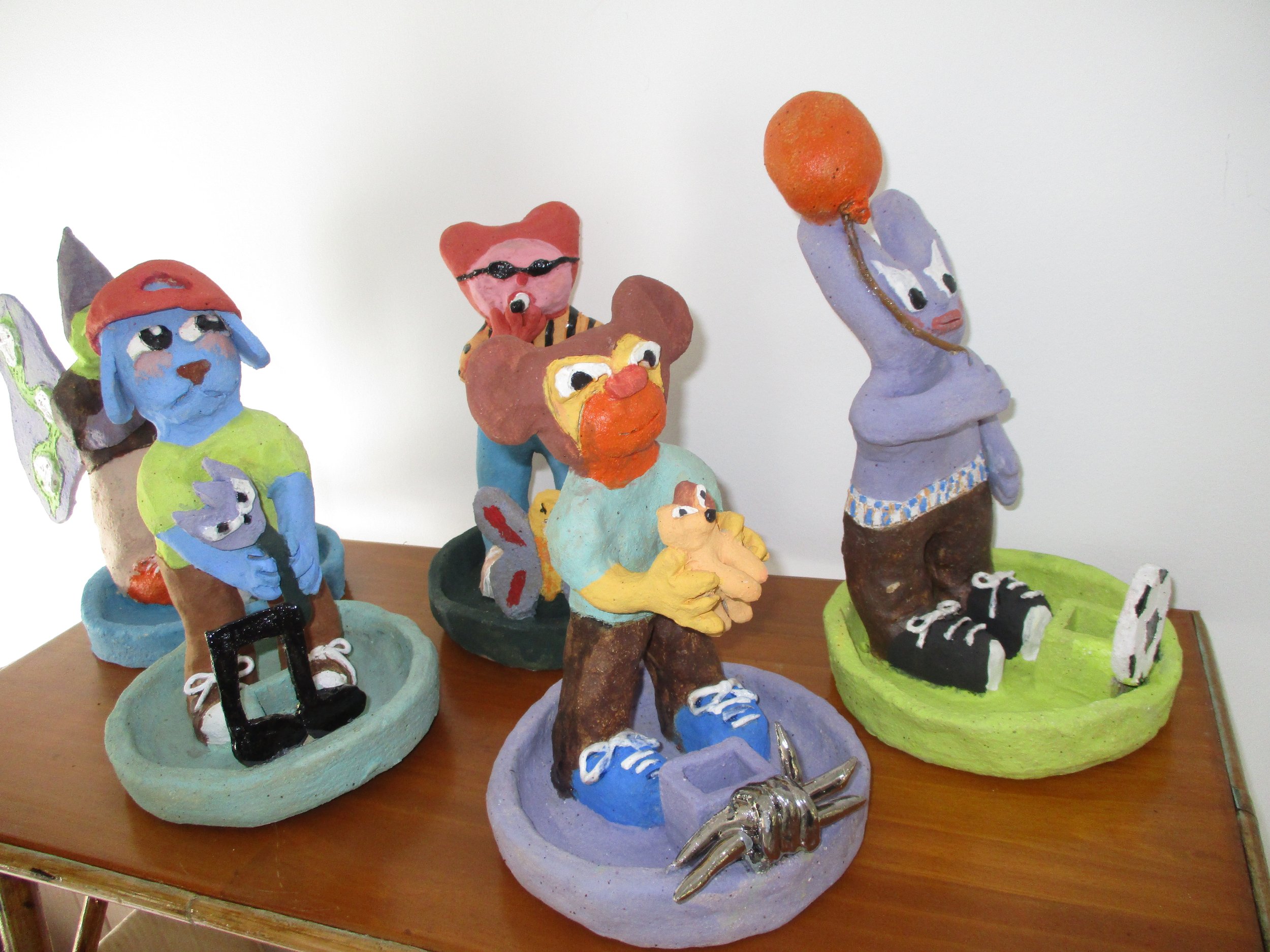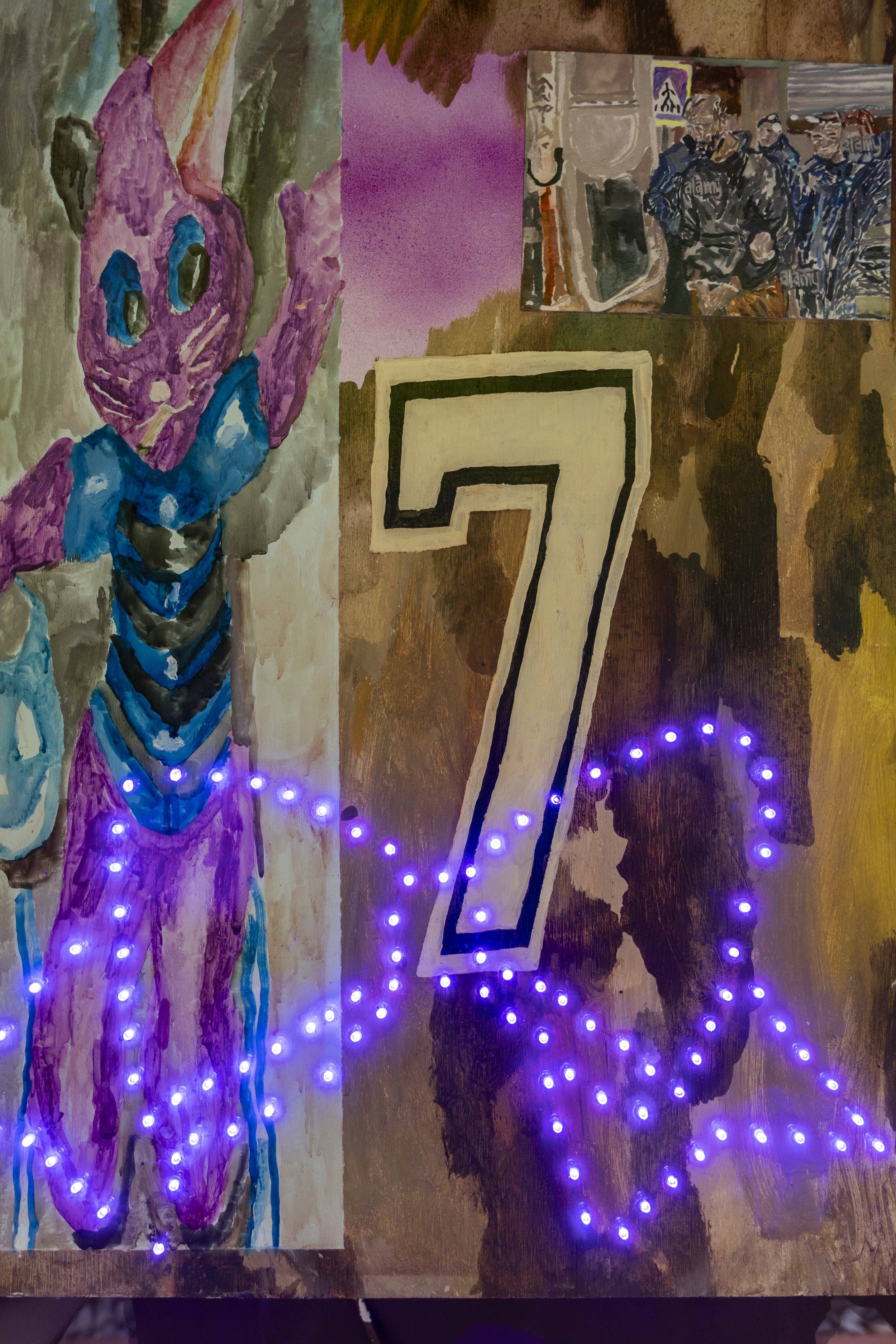Transcending Disciplines:
Visaya Hoffie in the Digital Sphere
She / Her
@vissyhoffie
In the world we live in, everything is instant. The digital era has taken over, and is now, undoubtably, an intimate part of our culture and everyday life. From social media to the more recent introduction of AI, technology has been advancing in leaps and bounds – but where does this place us and our humanity? It is a harsh reality that many of us feel disconnected from the world around us, as we connect with the life inside our screens. One person who has recognised this disconnect is Visaya Hoffie, an artist whose work entertains themes of communal disengagement in attempts to create a gateway for more connected perceptions.
Vissy is a prominent creative in Meanjin and since graduating with a Bachelor of Fine Arts in 2017, she has been creating with the intention to remain outside of societal boundaries. While Vissy continues to work within multiple disciplines, from ceramics to accessory design, it is her recent exhibition ‘SHRINES FOR THE TEMPORARILY FAITHLESS’ and the inspiration behind it, that resonated with the arrival of this new digital sphere.
Vissy, for those who don’t know of you and your work, can you tell us a little bit about yourself?
I’m a visual artist who resides in Meanjin. Although I majored in painting, I work across a range of different media and try to avoid locating my practice in any one identifiable field. I’m interested in producing work that responds to my everyday experiences - I like to explore the banal and throw-away aspects that sometimes give clues about the underbelly of our contemporary culture.
Before we dive into your practice, I wanted to ask, what is your relationship with social media?
Social media has become an extension of our everyday lives to the point that there is no separation between the online world and lived reality. What we consume in the online world affects all of our responses to our experiences offline as well as online.
Throughout history, artists have responded to the major technological breakthroughs of their time. Just as the camera shifted the way we see the world, social media has shifted our perceptions. Social media is part of the current zeitgeist, and it’s always part of the subject matter of my work.
In regard to your practice, I’ve seen your work across many disciplines. From prints to ceramics, paintings to accessory design. Is this exploration across disciplines essential to your work?
I’m interested in the way you can build your practice through processes of cross pollination; I’m interested in reaching different people from all walks of life not even necessarily just artists. I have a problem with an approach to art that sees itself as exclusive and only able to be understood by a few. Explorations across different disciplines makes me think about things in different ways, and it also allows my world to be accessed by different audiences with different expectations. Also, working across disciplines offers me a way of keeping myself interested in what I’m doing; it lets me escape from the confines of any particular media or visual vernacular. And I change media according to the context of whatever it is I’m addressing - each media offers its own particular range of visual language.
In your recent exhibition, ‘SHRINES FOR THE TEMPORARILY FAITHLESS’, what was the initial inspiration?
At the time I was thinking about how a sense of connectedness has changed and is changing in our fast-paced daily lives. Art remains one means we use to slow down and think about things, ideas, relationships in a more considered way. The glass-enclosed ‘shrines’ in a public space offered a little sanctuary to contemplate and maybe re-organise or re-connect some of the references of our daily lives.
Inside the shrines, the paintings featured a new kind of ‘still life’, using references primarily taken from screens. They combined fragments from images, half-remembered content, compositions and colours. Together the images offered a kind of mind-map, inviting the viewer to stop and look and engage with the work.
Each of the ceramics in the vitrines stood on little plinths made from discoloured second-hand mattress-toppers sourced from Marketplace, providing each character with its own separate isolated island. Each character was like a kind of odd little saintly figurine caught in situations that reflect our own everyday challenges.
I found it rather ambiguous to mix painting techniques, especially ones that to me, referred to impasto styles from the 17th century. Was this ambiguity intentional?
Well, the paint was rather flat, but the brushiness made them seem like impasto - and it’s true that I do mix up painting techniques on one surface - I like the tension between the historical references of painting that sit next to the DIY clumsiness that I use as a way of referencing other aspects of visual culture. I guess I like the contradictions and inconsistencies more than I do anything that looks totally ‘resolved’. I mean, this painting series had embedded LED lighting into images on the surface - that also signifies an aesthetic ‘conflict of interest’.
Something that has been also been striking to me about your work, is the presence of colour; it exudes an untroubled concept, but is there a reason to this?
I think that painting has to have allure - colour can be used as a way of attracting the viewer. Colour and composition are what ‘hooks’ the viewer in - or alternately, they can repel the viewer.
What’s next for you?
It’s important for me to keep working simultaneously on a number of projects, and currently I have a few projects on the go - installations, commissions and personal projects in the process of completion. I’m looking forward to new opportunities of working in new spaces and with new ideas and meeting new people while continuing to take on what comes my way.
This article was written on the lands of the Jagera people and pays respect to their connection to country. Sovereignty was never ceded.
Interviewed by Lillian O’Neill
Photographer: Christopher Lai














